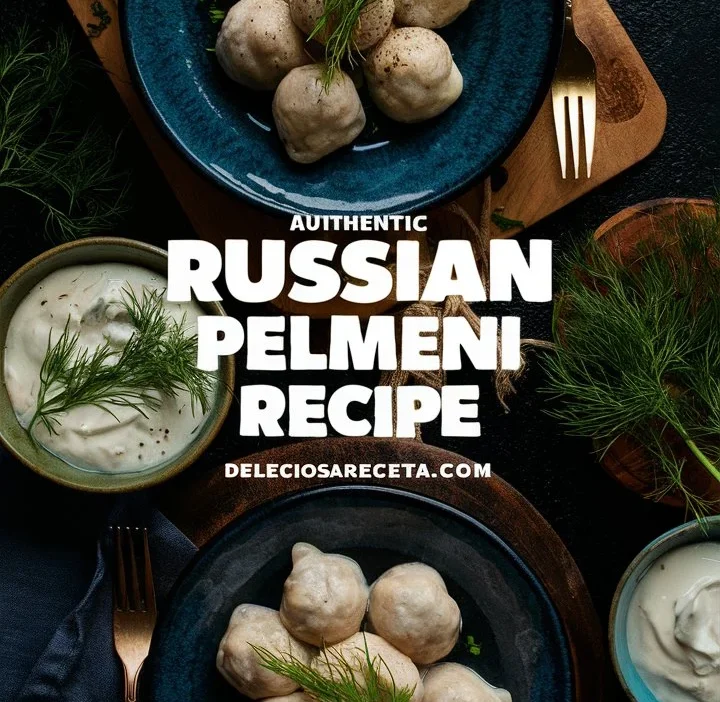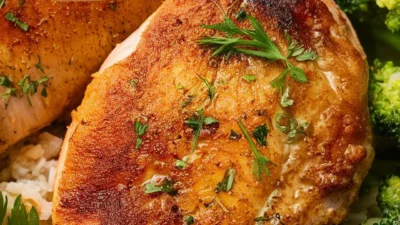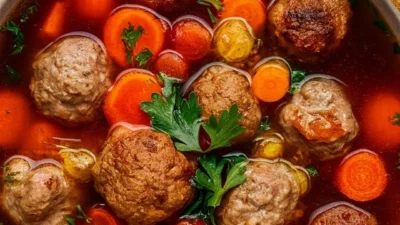Russian pelmeni are more than just dumplings — they are a symbol of comfort, tradition, and togetherness. Whether enjoyed on a frosty winter evening or shared during festive gatherings, these tender bites filled with savory meat are a culinary hug in a bowl. In this complete guide, we’ll explore everything you need to know about pelmeni: from their fascinating history to step-by-step preparation, variations, storage tips, serving suggestions, and pro-level tricks to make them perfect every time.
Sorry Generator
What Are Russian Pelmeni?
Pelmeni (пельмени) are traditional Russian dumplings made with thin, unleavened dough and a savory filling, most often a mixture of ground meat, onion, and spices. They are typically boiled in salted water or broth and served hot with butter, sour cream, or vinegar.
They are beloved not just for their taste but also for their convenience. Pelmeni can be made in large batches, frozen, and cooked quickly — a blessing during cold Russian winters when fresh ingredients were scarce.
A Brief History of Pelmeni
The origins of pelmeni are the subject of culinary debate. Many historians trace them back to Siberia, where hunters needed a portable, long-lasting source of nourishment. The dumplings, frozen naturally outdoors, could be boiled quickly over a campfire.
Some theories suggest that pelmeni came to Russia from China via the Ural Mountains, influenced by Chinese dumplings and Central Asian manti. The word pelmeni itself is believed to come from the Komi and Udmurt languages, meaning “ear bread,” a reference to their shape.
By the 19th century, pelmeni had spread across Russia, becoming a staple in households from Moscow to Vladivostok. Today, they are enjoyed worldwide, cherished both by Russian families and food lovers everywhere.
Why You’ll Love Making Pelmeni at Home
- Comforting Flavor – The combination of juicy meat filling and tender dough creates an irresistible bite.
- Customizable – You can change fillings, spices, and shapes to suit your taste.
- Perfect for Batch Cooking – Make once, freeze, and enjoy for months.
- Cultural Connection – Learn a timeless dish that carries centuries of tradition.
- Fun to Make Together – Shaping pelmeni can be a family or friends activity.
Essential Ingredients for Pelmeni
For the Dough
- All-Purpose Flour – 4 cups (500 g) for a sturdy yet tender texture.
- Egg – 1 large, for elasticity.
- Water – About 1 cup, lukewarm.
- Salt – 1 tsp, for seasoning.
For the Filling
- Ground Meat – 500 g (1 lb), traditionally half beef and half pork.
- Onion – 1 medium, finely minced or grated.
- Garlic – 2 cloves, minced (optional but adds depth).
- Salt – 1 tsp or to taste.
- Black Pepper – Freshly ground, about ½ tsp.
Optional Add-Ins for Flavor:
- Fresh dill or parsley, finely chopped.
- A splash of cold water in the filling for juiciness.
- A pinch of ground coriander or paprika.
How to Make Authentic Russian Pelmeni – Step by Step
Step 1 – Prepare the Dough
- In a large bowl, whisk flour and salt.
- Make a well in the center, add the egg and half the water.
- Stir gradually, adding more water as needed until a dough forms.
- Transfer to a floured surface and knead for about 8–10 minutes until smooth and elastic.
- Wrap in plastic wrap and let rest for 30 minutes to relax the gluten.
Pro Tip: Resting is essential — it prevents the dough from shrinking when rolled.
Step 2 – Make the Filling
- Combine ground meat, onion, garlic, salt, and pepper in a bowl.
- Mix well until the filling becomes slightly sticky — this means the proteins are binding.
- Cover and refrigerate until ready to assemble.
Step 3 – Roll Out the Dough
- Divide the rested dough into 4 portions.
- Roll one portion at a time into a thin sheet (about 1–2 mm thick).
- Keep the rest covered to prevent drying.
Step 4 – Cut and Fill
- Use a 3-inch (7–8 cm) round cutter or a glass to cut circles.
- Place about 1 tsp filling in the center of each circle.
- Fold into a half-moon and pinch edges tightly to seal.
- Join the two corners together to form the traditional pelmeni “ear” shape.
Pro Tip: Ensure no air pockets remain inside — they can cause dumplings to burst during cooking.
Step 5 – Cook the Pelmeni
- Bring a large pot of salted water or broth to a boil.
- Drop pelmeni in batches, stirring gently to prevent sticking.
- Once they float, cook for 3–4 more minutes.
- Remove with a slotted spoon and serve immediately.
Serving Suggestions
Pelmeni can be enjoyed in many delicious ways:
- Classic Style – With a dollop of sour cream and a sprinkle of fresh dill.
- Butter & Black Pepper – Toss with melted butter and freshly cracked pepper.
- In Broth – Serve in hot chicken or beef broth for a soup-like meal.
- With Vinegar – A traditional Russian twist: drizzle with white vinegar for a tangy kick.
- Pan-Fried – After boiling, sauté in butter until golden for extra texture.
Make-Ahead and Storage Tips
- Freezing Uncooked Pelmeni – Arrange on a tray in a single layer, freeze until solid, then store in a freezer bag for up to 3 months. Cook directly from frozen.
- Storing Cooked Pelmeni – Refrigerate in an airtight container for up to 3 days.
- Reheating – Steam, boil, or pan-fry until hot. Avoid microwaving to prevent sogginess.
Variations to Try
- Chicken Pelmeni – Use ground chicken with onion and parsley for a lighter option.
- Lamb Pelmeni – Add cumin and coriander for a Central Asian flair.
- Vegetarian Pelmeni – Fill with mushrooms, potatoes, or cottage cheese.
- Spicy Pelmeni – Mix chili flakes or paprika into the filling.
Expert Tips for Perfect Pelmeni
- Use cold filling to prevent the dough from becoming soggy.
- Roll the dough evenly — uneven thickness can cause overcooking or undercooking.
- Work in small batches to keep the dough pliable.
- Seal edges firmly to avoid leaks.
- Taste test one dumpling before cooking the full batch to adjust seasoning.
Frequently Asked Questions
Q: Can I make pelmeni without a pasta machine?
Yes! A simple rolling pin works perfectly, though a pasta machine can save time.
Q: Why did my pelmeni open during cooking?
They may not have been sealed tightly or had trapped air inside. Pinch edges well.
Q: What’s the best meat for pelmeni?
A 50/50 blend of beef and pork is classic, but you can use any ground meat.
Q: Can I bake pelmeni instead of boiling?
While not traditional, you can bake them after brushing with butter for a crispy variation.
Conclusion
Making authentic Russian pelmeni at home is a rewarding process that connects you to centuries of tradition. With the right dough texture, flavorful filling, and proper shaping technique, you can create dumplings that rival any restaurant.
Whether you enjoy them with sour cream on a snowy day, in a warm broth, or pan-fried to golden perfection, pelmeni offer comfort in every bite. Prepare them in large batches, share them with friends and family, and keep some in the freezer for those times you crave a taste of home.



